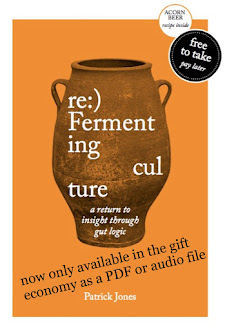Today's walk
Saturday, July 27, 2013
Fifteen of us walked out from the Daylesford Neighbourhood Centre today for one of my four hour foraging workshops, bracing winter's cold ground joy.
 |
| Foraging workshop. Photo: Dave Cauldwell |
We came across about thirty to forty autonomous foods including mallow (Malva) and wild radish (Raphanus raphanistrum).
 |
| Mallow (left), wild radish (right). Photo: Dave Cauldwell. |
The young leaves of acanthus (Acantha) can be eaten. The flowers and fruits (cheeses) can be cooked as a vegetable.
 |
| Acanthus. Photo: Dave Cauldwell. |
Buckshorn plantain (Plantago coronopus) can be eaten raw in salads or cooked.
 |
| Buckshorn plantain. Photo: Dave Cauldwell. |
Spear thistle root (Cirsium vulgare) is my favourite vegetable at the moment. Washing the clay from one in Lake Daylesford made a perfect end to the walk.
 |
| Washing spear thistle root in Lake Daylesford. Photo: Dave Cauldwell. |
Especially after chopping up the root, giving it a splash with local (Captain's Creek) red wine vinegar and serving it out to the lovely crew who came on the walk today.
 |
| Patrick Jones' foraging workshop, Lake Daylesford. Photo: Dave Cauldwell. |
Read more...















